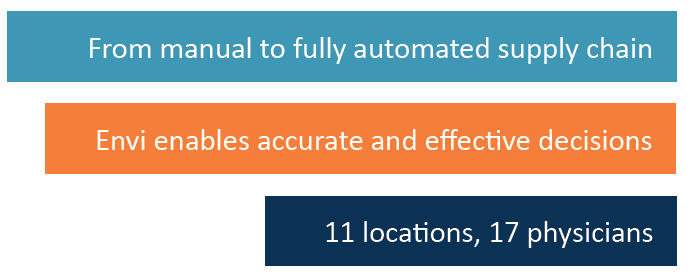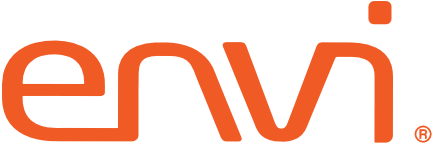
Mangrove Management Partners was founded by a collaboration of management and physicians to change the paradigm on the delivery of vascular and interventional care in the U.S. With a focus on superior patient safety and outcomes, the organization creates a practice environment for well-respected surgeons and other interventionalists, which allows clinicians to focus on delivering the best patient care, while management relentlessly focuses on safety, compliance, and best practices.
THE MANGROVE MANAGEMENT PARTNERS STORY
A Lack of Infrastructure Equaled Low Visibility
Kyle Prentice, Vice President, Supply Chain Management, joined Mangrove Management Partners to help the organization execute upon its vision to have a best-in-class supply chain management infrastructure and processes. “Upon joining the organization, I realized we didn’t have an easy way to determine what we were buying, at what cost or how much of it we bought. It was difficult to make data-driven decisions, because frankly we didn’t have the right information. In turn, that made conversations with industry partners about price negotiations difficult, because we didn’t have good visibility to market share data, purchase history and our volume growth.”
Prentice was an experienced user of Envi® materials management solution, with extensive knowledge of how the system could be used to automate processes and gain enhanced visibility into key areas of analytics, including purchasing data and case costing. He leveraged the system to help the organization gain better insights into supply management.
Setting Up the Envi Solution
First, Prentice needed to understand what was being used in each of the facilities and what was in inventory. The organization needed a starting point to set up Envi. “At the beginning of the process, I just needed data to get the system built. By doing a deep-dive into our purchase history, we were able to compile the data needed for a solid starting point.”
With a focus on the basics, Prentice recommends taking time to build a strong foundation. “Be sure you’ve got a clear vision of how you want to track data before you start building in Envi. Don’t run before you walk, think ahead, and strategically include all stakeholders in the process to identify different needs; then Envi can help with recommendations and best practices.”
“Map out all the groundwork –gather all the data, develop a strategy, create your item master, and then, you can begin to look at fine tuning your supply chain through standardization. You’ll build a more informed view and understanding that you can share with the rest of your team as you involve them in best practices.”
With Envi up and running, and a well-structured item master, Prentice began forming committees that
would start conversations with physician leaders about standardization, a big step forward for the organization.

New Best Practices Across the Organization
The central item master is the hub to many process improvements at Mangrove. “Our item master is a key component in our standardization efforts, but it also makes our processes easier for everyone. With a couple clicks, we can identify highest spend and/or volume items, and in turn work with industry partners toward more favorable pricing. With Envi, Mangrove is now able to quickly and accurately report on our second highest operating expense.”
Additionally, with Envi implemented in Mangrove’s affiliated Office Based Labs (OBLs), team members can manage inventory to par levels. “We leverage the data in the central item master, and our team can track supply usage, which we use for multiple functions, including inventory tracking and case costing. Usage data is
important, but the biggest benefit from Envi has been
getting to true case costing.”
With data, decisions across the organization are more accurate and effective – for the supply chain team and beyond. Today the team uses Envi data, to make both strategic decisions and to provide clinicians with additional information about procedural patterns and decisions.
Envi Best Practice Highlights
- Creating a well-planned data structure
- Creating visibility to purchasing data that enables informed internal and external conversation based on facts
- Ease of onboarding new facilities
- Developing accurate case costing
